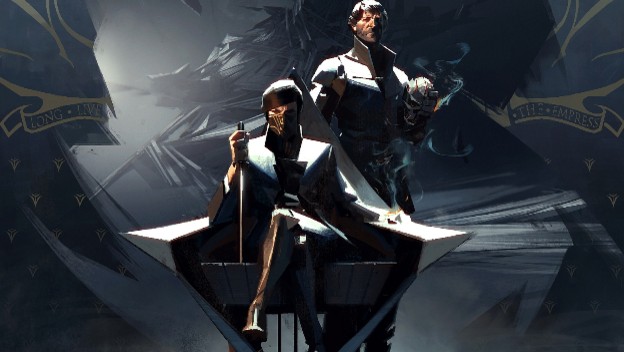Prince of Persia: The Sands of Time was probably one of the first games to introduce Ubisoft’s trademark parkour game mechanic and stealth. Assassin’s Creed managed to popularize rooftop sprinting to the point where we are wont to compare it to all other stealth games. One of the best ways to describe Middle-earth: Shadows of Mordor , for example, is “like Assassin’s Creed with more killing”. Or I often describe Dishonored 2 as “like Assassin’s Creed with emphasis on stealth”. Dishonored 2 is going to have even more exciting ways to be the shrouded assassin I always thought Ezio should have been. So why isn’t he, or any of the other Assassin’s Creed characters? Simply put, the Assassin’s Creed games are not about stealth. The title is thereby quite deceiving, but I think that depends on what you think an assassin is. For Dishonored , an assassin is someone that can sneak in and out of areas completely undetected. For Assassin’s Creed , an assassin is someone that can waltz through the front door, kill everyone, and call it undetected.
As much as I think Assassin’s Creed should be about stealth, I would be a fool not to admit that game series is definitely more about killing people in ever more creative ways. But that doesn’t mean the stealth elements in both Dishonored 2 and Assassin’s Creed can’t be compared. For example, in both games you have the option of either killing everyone or sneaking by unnoticed. The motivation for the player to use stealth per mission is what drives the experience of the game. In the case of Dishonored 2 , Arkane Studios uses consequences. Whether the player deems them good or bad, is up to them. It’s even been implied that there will be more than the two options of Low Chaos and High Chaos that were found in the original Dishonored .
Assassin’s Creed allows the player to motivate themselves, as there are no consequences either way. The only motivation the player might have is that on the missions in which stealth is allowed, it is more challenging for the player to use stealth. Sometimes the game not-so-subtly recommends stealth, but how the player completes the mission does not affect the story or gameplay in any way. Clearly, there are two very different ideas of “assassin” in these games.
The main difference between Assassin’s Creed and Dishonored 2 is the ability to take down your enemy in a non-lethal way. None of the games in the Assassin’s Creed series will let you do this. You have to kill your enemy if you want them out of the way. Why has Ubisoft never included what seems to be such a simple mechanic? This one actually baffles me. As an assassin, you probably have very particular skills that don’t really apply to slaughtering armies. Thus, you want to avoid invoking such situations. Yet the amount of times an Assassin’s Creed game wants you to do just that is pretty staggering.

Dishonored 2 , however, promises that it will have even more ways to take down your enemy non-lethally. As an example, the Creative Director of Dishonored 2 , Harvey Smith, explains “a non-lethal drop attack – when you fall on people, you knock them out instead of stabbing them.” The very presence of such a mechanic in Dishonored 2 but not Assassin’s Creed speaks volumes for the creative motivation behind each game.
Though I hope that Ubisoft can take cues from the Dishonored series, the stealth aspects of both games will likely not change. The very motivation for the player to use stealth and the non-lethal takedown mechanic divides the games even further. Despite Assassin’s Creed’s deceiving title, it is definitely more about combat than it is about understanding the intricacies of being an assassin. If you want to feel like a ghost, coming and going without rustling so much as a tablecloth, I suggest Dishonored 2 .
